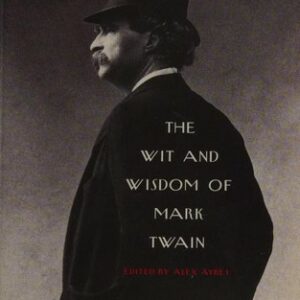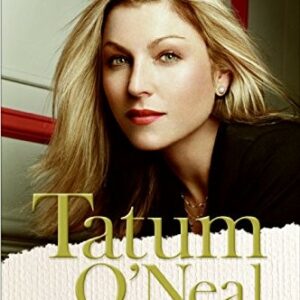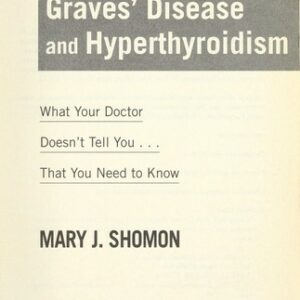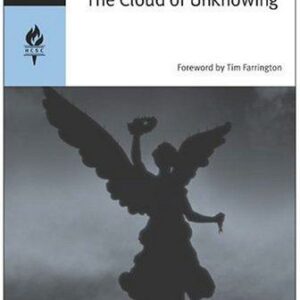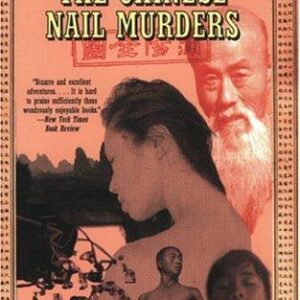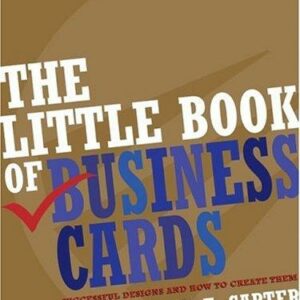A Fever in the Heartland
$18.00
| Title | Range | Discount |
|---|---|---|
| Trade Discount | 5 + | 25% |
- Description
- Additional information
Description
NEW YORK TIMES BESTSELLER • A Washington Post Notable Work of Nonfiction • An NPR Best Book of the Year • A Kirkus Reviews Best Book of the Year • A Chicago Review of Books Best Book of the Year • A New York Public Library Best Book of the Year • A Goodreads Choice Awards Finalist
“With narrative elan, Egan gives us a riveting saga of how a predatory con man became one of the most powerful people in 1920s America, Grand Dragon of the Ku Klux Klan, with a plan to rule the country—and how a grisly murder of a woman brought him down. Compelling and chillingly resonant with our own time.” —Erik Larson, author of The Splendid and the Vile
“Riveting…Egan is a brilliant researcher and lucid writer.” —Minneapolis Star Tribune
A historical thriller by the Pulitzer and National Book Award-winning author that tells the riveting story of the Klan’s rise to power in the 1920s, the cunning con man who drove that rise, and the woman who stopped them.
The Roaring Twenties–the Jazz Age–has been characterized as a time of Gatsby frivolity. But it was also the height of the uniquely American hate group, the Ku Klux Klan. Their domain was not the old Confederacy, but the Heartland and the West. They hated Blacks, Jews, Catholics and immigrants in equal measure, and took radical steps to keep these people from the American promise. And the man who set in motion their takeover of great swaths of America was a charismatic charlatan named D.C. Stephenson.
Stephenson was a magnetic presence whose life story changed with every telling. Within two years of his arrival in Indiana, he’d become the Grand Dragon of the state and the architect of the strategy that brought the group out of the shadows – their message endorsed from the pulpits of local churches, spread at family picnics and town celebrations. Judges, prosecutors, ministers, governors and senators across the country all proudly proclaimed their membership. But at the peak of his influence, it was a seemingly powerless woman – Madge Oberholtzer – who would reveal his secret cruelties, and whose deathbed testimony finally brought the Klan to their knees.
A FEVER IN THE HEARTLAND marries a propulsive drama to a powerful and page-turning reckoning with one of the darkest threads in American history.NEW YORK TIMES BESTSELLER
A Washington Post Notable Work of Nonfiction
An NPR Best Book of the Year
A Kirkus Reviews Best Book of the Year
A Chicago Review of Books Best Book of the Year
A California Review of Books Best Book of the Year
A New York Public Library Best Book of the Year
A BookPage Best Book of the Year
A Library Journal Best Book of the Year
A Goodreads Choice Awards Finalist
Amazon’s Best Books of the Year (History)
Barnes & Noble Best Books of the Year (History)
“Powerful . . . As a narrative, “A Fever in the Heartland” is gripping; as a rumination on the moral obscenity of white supremacy — whatever guises it wears — the book is damning.” —The New York Times Book Review
“A master class in the tools of narrative nonfiction: high stakes, ample suspense and sweeping historical phenomena made vivid through the dramatic actions of individual villains and heroes.” —The Washington Post
“Riveting…Egan is a brilliant researcher and lucid writer.” —Star Tribune
“Masterful…this is a fascinating read and revelation of American history.”—The Spokesman-Review
“With narrative elan, Egan gives us a riveting saga of how a predatory con man became one of the most powerful people in 1920s America, Grand Dragon of the Ku Klux Klan, with a plan to rule the country—and how a grisly murder of a woman brought him down. Compelling and chillingly resonant with our own time.” —Erik Larson, author of The Splendid and the Vile
“Timothy Egan’s history of the Ku Klux Klan’s rise and fall is absolutely gripping. It is also terrifyingly relevant.” —Elizabeth Kolbert, Pulitzer-Prize winning author of The Sixth Extinction
“Egan has done it again, mastering another complicated American story with authority and surprising detail. The Klan here are not the nightriders of the late 19th century, but a retooled special interest group and unusually potent political power. The influence they wielded over states and policy should put a chill in every American. Bravo.” —Ken Burns
“With meticulous detective work, Timothy Egan shines a light on one of the most sinister chapters in American history—how a viciously racist movement, led by a murderous conman, rose to power in the early twentieth century. A Fever in the Heartland is compelling, powerful, and profoundly resonant today.” —David Grann, author of The Wager and Killers of the Flower Moon
“[A] riveting exposé.” —Booklist, starred review
“Riveting history…excellently rendered.” —Kirkus, starred review
“[A] certifiable page-turner.” —Publishers Weekly, starred review
“Engrossing…a valuable work of history.” —Shelf Awareness, starred reviewTimothy Egan is a Pulitzer Prize–winning reporter and the author of nine other books, including the New York Times bestsellers A Fever in the Heartland and The Immortal Irishman. His book on the Dust Bowl, The Worst Hard Time, won a National Book Award for Excellence in Nonfiction. His account of photographer Edward Curtis, Short Nights of the Shadow Catcher, won the Carnegie Medal for nonfiction.1.
Birth and Death of the Klan
1866-1872
When white-sheeted nightriders first appeared in the dark Southern night, many people thought they were ghosts. That was the idea: the souls of those who’d died for a republic of slaveholders had returned from their graves. They were out for vengeance, and they were invisible. They burned houses and churches, stole crops and food, dragged men from their farms and whipped them until they fell, ripped teachers from schoolhouses and branded their foreheads, raped women in front of their children, and shot their husbands at point-blank range. During rampages, they often displayed skeletal hands from beneath their robes, rattled chains, or removed fake heads-all to further the scare of a spectral and invincible force. In daylight, they vanished. The morning after a raid, a victim might come across the man who had torched his barn, the clerk at the mercantile store, and know nothing of his role in the nocturnal horror. But they were not ghosts. The hooded horsemen were part of the unmoored mass of defeated Confederate soldiers, more than half a million men who’d surrendered on the condition that they not “take up arms against the United States.” Though conquered, they were free to return home, free to farm and bank and own property, eventually free to vote and hold office. For the most part, traitors were not tried.
In early 1866, six of those rebel veterans met in Pulaski, in Middle Tennessee a few miles north of the Alabama border, to form a secret club. The market town of 2,000 people was named for a Catholic immigrant from Poland who’d fought for the Americans against the British. Before the Civil War, almost half the county was enslaved. Now they walked the streets-freedmen and freedwomen. They attended schools, held worship services, and made plans to vote. President Lincoln had established a Freedmen’s Bureau to help people who’d been held in bondage become people with tools to make a living on their own. His generals had offered reparations-forty acres and a mule, carved out of land seized from more than 70,000 slaveholders. But his successor, Andrew Johnson, had overturned the order just a few months after Lincoln was assassinated. The task of peace, as Walt Whitman had prophesied, would be more difficult than the war itself.
Two of the young men gathered in Pulaski had been Confederate officers. Two were lawyers. One was a newspaper editor. One was a cotton broker. They were adrift, bored, and bitter, chafing at new life in the South after four million enslaved people had been freed, and would soon make up 36 percent of the citizen population. The Greek word kuklos, representing a circle, was offered as a name. Klan was an alliterative pairing of the first word, and an echo of the clans to which the Old World ancestors of these Scots-Irish Protestants had belonged. A costume came together: a conical top to make the wearer look much taller, a white mask with cutouts for eyes, a long robe with symbols stitched to it. Silly rituals and silly titles were invented. When the first public parade was held in Pulaski, the original six had expanded to seventy-five masked men marching in the street. The local paper printed a story a week about this mysterious new club. What was the purpose? Brotherhood. Mystery. And power. “The first meeting was purely social,” wrote James R. Crowe, one of the original half-dozen. “We would frequently meet after the day’s business was over in some room or office. We would have music and songs.”
His framing of the founding was a not-so-sly bit of myth-crafting. Before long, the music and song had become arson and whipping. In early 1867, a Tennessee paper reported the rise of “some general and unrefined dread among Negroes of a secret order that has recently made its appearance.” And that secret order had spread beyond Pulaski. At a regional convention in Nashville, a prominent Tennessean, Nathan Bedford Forrest, declared himself the first Grand Wizard. As a Confederate general, Forrest was notorious for the Fort Pillow Massacre, the execution of about 150 Black Union soldiers who had thrown down their arms and surrendered. On his orders, they were bayoneted, clubbed to death, and “shot down like dogs,” one Confederate soldier wrote. Pardoned by Johnson of the war crime, Forrest had trouble making a living in an economy no longer built on human property. Beady-eyed and bewhiskered, he loathed the idea of the Black race standing on equal terms with whites. “The Negroes were holding night meetings, were going about, were being very insolent,” Forrest explained in a congressional hearing. “Ladies were ravished by some of these Negroes.”
When the South refused to grant basic rights to the formerly enslaved, the region was put under military control and divided into five districts. Reconstruction of a new society was mandated by Congress and enforced by federal troops. Defiant local governments were replaced by law-abiding ones. But now the Klan had a larger purpose: it turned to terror. The silly rituals and silly titles gave way to insurrection. In Tennessee, they started raiding at night, destroying property, breaking into homes, firing shots. Black people who promoted voting were lashed and burned. White teachers in Black schools were dragged from their homes and ordered to leave. One was pistol-whipped and told that “no damn Yankee bitch should live in this county.” In Mississippi, the Klan drove out nearly every teacher in a Black school. At the same time, independent Klan units sprouted in California, where migrants from China were nearly 10 percent of the population. Arsonists burned a Methodist church that had housed a Sunday school for Chinese children. The Klan in San Jose issued a threat to farmers in the southern Bay Area: they would destroy all crops of people who hired a single Asian.
Throughout the South and parts of the West Coast, young Klansmen acted with impunity. Their pamphlets were bold and declarative of their purpose, as one proclaimed: “Unholy blacks, cursed by God, take warning and fly.” With confidence came arrogance. By 1868, Forrest boasted of a tide of newborn rebels-40,000 Klansmen in Tennessee, a half million throughout the South, in every province of the former Confederacy. “It’s a protective, political, military organization,” Forrest told a reporter. When this interview was reprinted in papers around the nation, people were shocked. The North had won the war. The South was winning the peace. And when asked about this assertion, Forrest did not deny it. “If they send the black men to hunt those Confederate soldiers whom they call Kuklux, then I say to you, ‘Go out and shoot the Radicals.'”
In July 1866, a white mob backed by police stormed a Black political gathering in New Orleans, stomping men to death, shooting, stabbing, and mutilating others. More than thirty people died and 160 were seriously hurt before federal troops restored order. A similar scene bloodied the streets of Memphis that year-a three-day war that killed forty-six Black people and reduced twelve schools and four churches to ash-heaps. In Arkansas, more than 2,000 African Americans were murdered in the months leading up to the 1868 presidential election. In Lafayette County, Mississippi, thirty Black residents were driven out of their homes and forced to the water’s edge, where they were drowned. In the years that followed, people who fished the Yocona River snagged human skulls and bones from the depths.
“The Freedmen are shot and Union men are persecuted if they have the temerity to express their opinion,” said General Philip H. Sheridan, whose military district included Louisiana and Texas. A Tennessee authority complained to President Johnson that the Klan rode freely at night, “causing dismay & terror to all-Our civil authorities are powerless.”
Johnson was frequently drunk and openly foul-mouthed, a quarrelsome Tennessee Democrat put on the ticket in 1864 by Lincoln as a unity gesture. Just days before he was murdered, Lincoln had become the first president to publicly raise the prospect of full African American citizenship. Johnson, sworn in six weeks after Lincoln began his second term, would have none of his predecessor’s vision. He ignored pleas from civil authorities to go after the Klan, and he urged Southern politicians to balk at expanding the Constitution. “Everyone would and must admit that the white race was superior to the Black,” he said. He vetoed the Civil Rights Act of 1866, a legislative attempt to extend real power to the formerly enslaved, but was overridden by a strong majority in Congress. “This is a country for white men, and by God, as long as I am president, it shall be a government for white men,” he wrote that year. He then announced an amnesty proclamation for ex-Confederates, an unconditional pardon, restoring all rights except property ownership of human beings.
Violence escalated: lynching, arson, beatings, a reign of orchestrated bloodshed for the last three years of Johnson’s chaotic term. The exact number of deaths has never been fully established, but one military commander, General John Reynolds, reported from Texas that murders of Black citizens were “so common as to render it impossible to keep an accurate account of them.” Sheriffs would not arrest their criminal neighbors. Witnesses were intimidated or murdered. “We can inform you that we are the law itself,” was the message delivered from a Klan unit to one teacher in Mississippi.
We are the law itself-the same boast would be heard in Indiana, fifty years later, taking flight through the revelations of Madge Oberholtzer.
Johnson was impeached by the House, acquitted by a single vote in the Senate, then rendered powerless. When the Union general Ulysses S. Grant was elected in 1868, he carried most of the North and a handful of Southern states where large numbers of Black men had been able to vote, thanks to the protection of federal troops. A few months into his presidency, he got a letter from a widow, Sallie Adkins, of Georgia; her spouse, a state senator, had been assassinated on the open road by a Klansman. “I am only a poor woman whose husband has been murdered for his devotion to his country,” she wrote the president. Grant promised to smash the Klan. There was nothing gallant or noble about these midnight marauders. The president saw them for what they were: killers in bedsheets who were “trying to reduce the colored people to a condition closely akin to that of slavery,” he said.
In Lincoln’s final days, he had sought to expand the Constitution. What followed was “a massive experiment in interracial democracy,” the historian Eric Foner wrote. In the first lightning strike, the 13th Amendment, slavery was formally outlawed in 1865. In the second, passed after the president was killed, a citizen was defined in the 14th Amendment as anyone born or naturalized in the United States. The 15th Amendment, ratified in 1870, prevented states from denying voting rights based on color. Grant called the last of the three additions “the most important event that has occurred since the nation came to life.”
The problem for the general who had won the war was that the Klan was not an organized army with a defined chain of command. Across the South, Klan units would not stand and fight against federal forces. They would not stand at all. They could not be chased across the land or forced to assemble in a defensive posture atop a hill. The enemy was “the most atrocious organization that the civilized part of the world has ever known,” Grant’s Justice Department declared. After Congress handed him the tools he needed, the president used the Ku Klux Klan Acts to hammer the hooded order. He sent federal authorities, backed by more federal troops, to prosecute what were now federal crimes. He declared martial law in places. He suspended habeas corpus. In the fall of 1869, nearly 2,000 Klansmen were arrested in South Carolina alone. By end of the next year, 3,000 were indicted across the South. A third of them were convicted and sent away with long prison terms. Acknowledging defeat, the Klan formally disbanded under an order from Forrest. He burned all records.
Frederick Douglass had seen the postwar carnage coming. As a manacled young man, he taught himself to read and write, breaking the law and risking the lash, a voracious student of classics, philosophy, and history. As an orator and essayist, he saw his words widely published; by the 1860s, he was the most prominent Black man in America. “The work does not end with the abolition of slavery,” he said, not long after Lincoln was shot in the head, “but only begins.” When Grant crushed the Klan in the South, Douglass wrote, “The scourging and slaughter of our people have so far ceased.”
So far.US
Additional information
| Weight | 12 oz |
|---|---|
| Dimensions | 0.9400 × 5.4500 × 8.4200 in |
| Imprint | |
| ISBN-13 | |
| Author | |
| Audience | |
| BISAC | |
| Subjects | history books for adults, non fiction books for adults, best nonfiction books, american history books for adults, timothy egan, historical nonfiction best sellers, HIS029000, non fiction best sellers, nonfiction best sellers, nonfiction books best sellers, nonfiction books, new york times best sellers, best books, dad books, history gifts, history, dad gifts, American history books, us history, Best nonfiction, ku klux klan, non fiction, history books, nonfiction, books for dad, american history, HIS054000, gifts for dad, america |
| Format |


